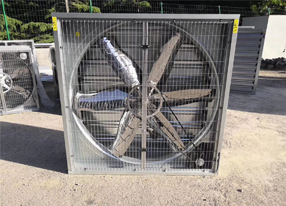automatic chicken scalder
Dec . 03, 2024 17:00 Back to list
automatic chicken scalder
The Importance of Automatic Chicken Scalders in Poultry Processing
The poultry industry is a critical component of the global food supply chain, providing millions of people with affordable protein sources. As consumer demand for poultry continues to grow, the need for efficient and humane processing methods has become increasingly important. One pivotal piece of equipment in this process is the automatic chicken scalder, a device designed to facilitate the scalding of chickens prior to plucking. This article explores the significance of automatic chicken scalders, their operational mechanisms, and their impact on the poultry industry.
Understanding the Scalding Process
Scalding is the process of soaking chickens in water heated to a specific temperature to loosen feathers for easier plucking. This step is crucial because it not only enhances the efficiency of feather removal but also helps ensure a higher quality product. Traditional scalding methods involve manual labor and can be time-consuming, leading to inconsistencies and potential animal welfare concerns. Automatic chicken scalders have emerged as a solution, significantly improving both the operational efficiency and animal welfare standards in poultry processing.
Mechanisms of Automatic Chicken Scalders
Automatic chicken scalders are engineered to provide precise temperature control and consistent water circulation. These machines typically consist of a heated water reservoir, an automated feeding mechanism, and a plucking conveyor. Once chickens are processed through the slaughtering phase, they are conveyed to the scalder. The process begins with chickens being submerged in water heated to optimal temperatures, usually between 140°F to 160°F (60°C to 70°C), depending on the specific requirements of the operation.
The automatic nature of these machines allows for uniform exposure of each bird to the scalding water. This is crucial not only for feather removal efficiency but also for maintaining the quality of the meat. Uneven scalding can result in damaged skin and compromised meat quality, leading to increased waste and potential financial loss for processors.
Benefits of Automatic Chicken Scalders
automatic chicken scalder

1. Increased Efficiency One of the most significant advantages of automatic chicken scalders is the increase in overall processing speed. By automating the scalding process, processors can handle larger volumes of chickens in a shorter amount of time, meeting the rising demand for poultry products.
2. Improved Animal Welfare Automatic scalders are designed to minimize stress and discomfort to the birds. By providing a controlled and consistent environment for scalding, these machines ensure that the process is completed swiftly and humanely, maintaining compliance with animal welfare regulations.
3. Quality Consistency The precise temperature and timing controls offered by automatic chicken scalders lead to more consistent results. This means higher quality meat with fewer defects, which is crucial for processors aiming to meet the expectations of consumers and retail partners.
4. Cost-Effectiveness Although the initial investment in automatic chicken scalders may be significant, the long-term savings associated with reduced labor costs, improved efficiency, and higher quality output can make these machines a cost-effective solution for poultry processors.
5. Sustainability Modern automatic chicken scalders are designed to be more environmentally friendly, using less water and energy compared to traditional methods. This aligns with the increasing push towards sustainable practices within the food production sector.
Conclusion
The role of automatic chicken scalders in poultry processing cannot be overstated. As the industry continues to evolve in response to consumer demands for efficiency, quality, and humane treatment, these machines represent a significant technological advancement. They not only streamline the processing workflow but also contribute to better outcomes for both the poultry and the people consuming it. As such, embracing automatic chicken scalding technology is not just a business decision, but a commitment to improving standards across the poultry industry.
-
Hot Sale 24 & 18 Door Rabbit Cages - Premium Breeding Solutions
NewsJul.25,2025
-
Automatic Feeding Line System Pan Feeder Nipple Drinker - Anping County Yize Metal Products Co., Ltd.
NewsJul.21,2025
-
Automatic Feeding Line System Pan Feeder Nipple Drinker - Anping County Yize Metal Products Co., Ltd.
NewsJul.21,2025
-
Automatic Feeding Line System - Anping Yize | Precision & Nipple
NewsJul.21,2025
-
Automatic Feeding Line System - Anping Yize | Precision & Nipple
NewsJul.21,2025
-
Automatic Feeding Line System-Anping County Yize Metal Products Co., Ltd.|Efficient Feed Distribution&Customized Animal Farming Solutions
NewsJul.21,2025






